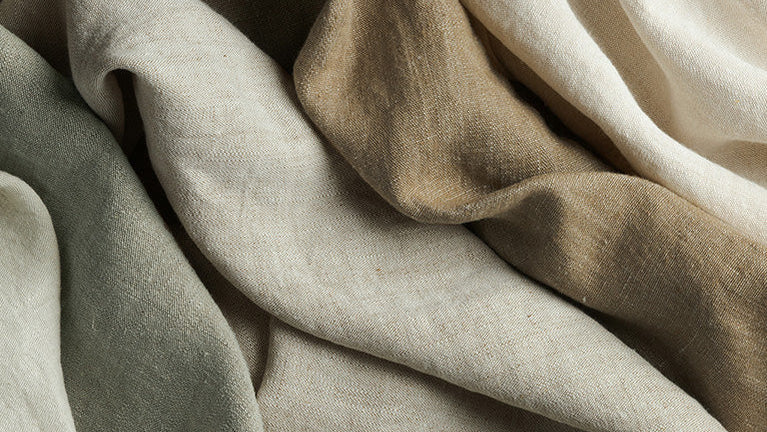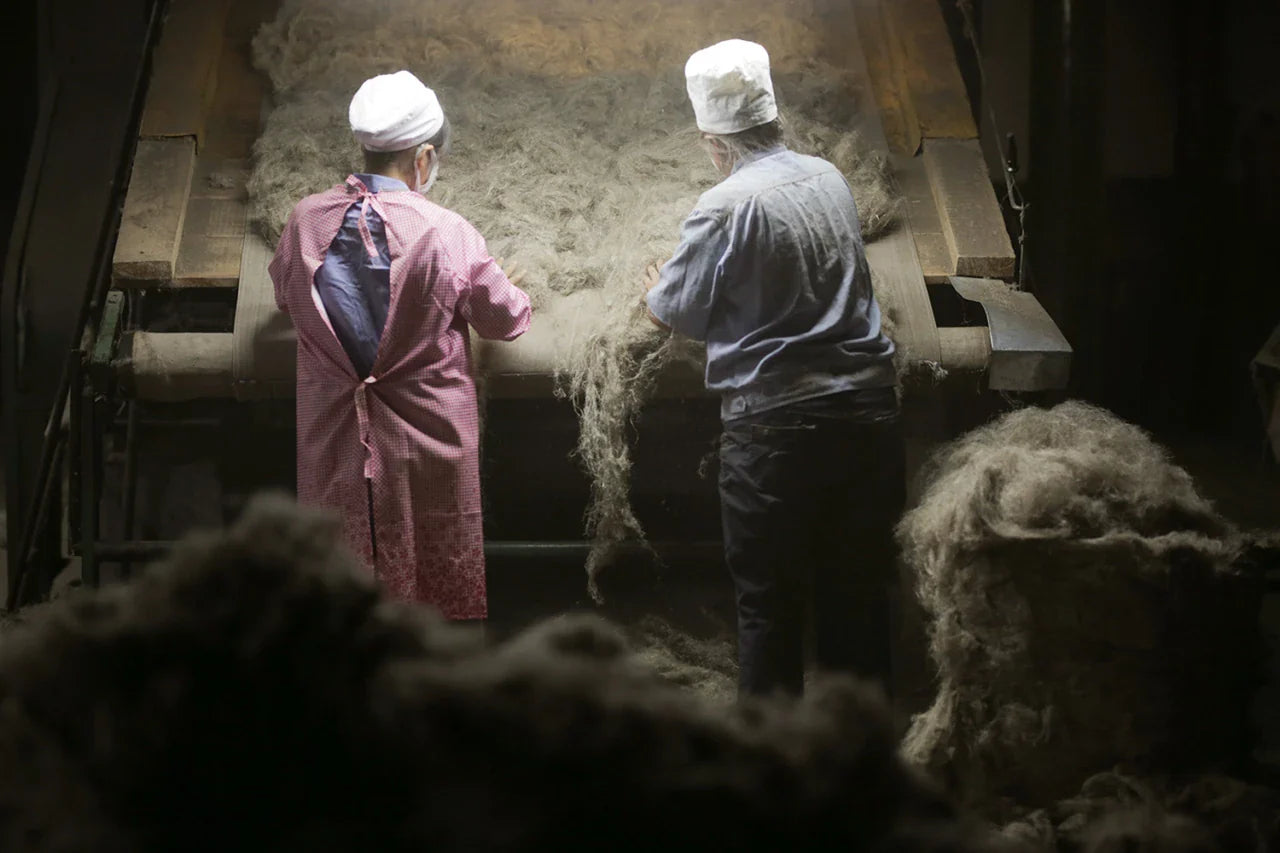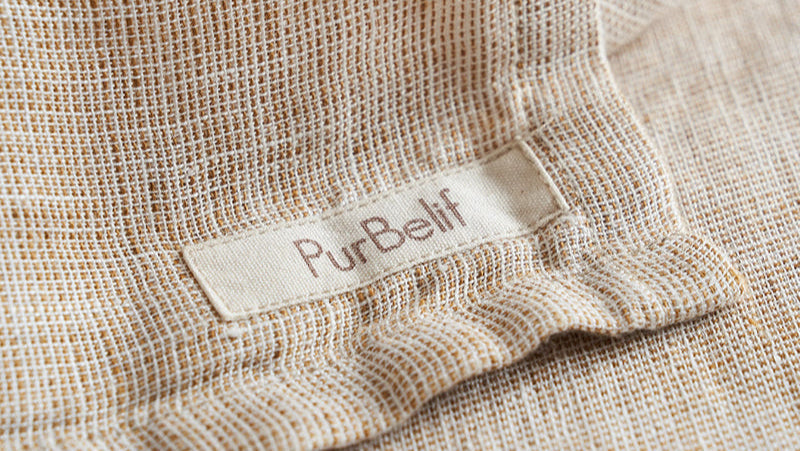Choosing Earth-Friendly Fabrics: Top Sustainable Fabrics Ranked Best to Worst

When it comes to reducing our environmental impact, few decisions are as significant as selecting sustainable fabrics for the products we use in daily life. The textile industry is one of the largest contributors to pollution, with detrimental effects spanning from fabric production to the microfibers released during washing. These pollutants harm ecosystems, disrupt waterways, and jeopardize wildlife.
By prioritizing fabrics that are sustainably produced, durable, and biodegradable, we can actively contribute to protecting the environment. Below, we’ve highlighted six key fabrics, ranked from most to least sustainable, exploring their environmental impact during production, use, and disposal.
- Hemp
Hemp stands at the forefront of eco-friendly fabrics, earning its title as the most sustainable option available. This remarkable plant requires minimal water to thrive and produces 2-3 times more fiber per acre than cotton. It even enriches the soil in which it grows, making it a natural ally for biodiversity and carbon sequestration. A single hectare of hemp can store 9-15 tons of CO2, comparable to the capacity of a young forest.
Hemp fabric is breathable, soft, moisture-wicking, and naturally antibacterial. Over time, it becomes even softer and more comfortable to wear. Unlike synthetic fabrics, hemp’s natural fibers break down easily, leaving no harmful microplastics behind. Once its life cycle ends, hemp is fully biodegradable and compostable – even ideal for garden mulch.
From its regenerative cultivation to its durability and compostability, hemp is the epitome of an Earth-friendly fabric.
- Linen
Linen, along with hemp, has long been recognized as one of the most sustainable and historically significant fabrics, with origins tracing back over 30,000 years. Derived from the flax plant, linen production is inherently eco-friendly, utilizing the entire plant to minimize waste. Flax is easy to grow, replenishes quickly, and requires significantly less water than cotton, all without the need for chemical fertilizers or pesticides. Sustainable methods like dew-retting or enzyme-retting further enhance its environmental benefits compared to traditional water-retting.
Known for its remarkable durability, linen boasts a lifespan that surpasses many other fabrics, making it a lasting choice. As more individuals embrace sustainability and a return to simpler, ancestral lifestyles, linen has seen a resurgence in popularity. Lightweight, breathable, absorbent, antimicrobial, and naturally moth-resistant, it is especially suited for warm climates. Linen also provides unique protection by reducing gamma radiation by nearly half, shielding against solar radiation. Unlike most fabrics, linen becomes stronger when wet and softens with each wash. Additionally, its microfibers are environmentally safe, naturally biodegrading in water.
Undyed or naturally dyed linen fully decomposes over time, cementing its reputation as one of the most Earth-friendly materials. Beyond its environmental benefits, linen is celebrated for its potential healing properties. A 2003 study by Dr. Heidi Yellen explored the vibrational frequencies of various fabrics, finding that linen resonates at a frequency of 5,000—far surpassing the human body’s natural frequency of 100. This high frequency can energize and support the body, making linen a unique fabric that not only protects the environment but may also promote personal well-being.
When left undyed or naturally dyed, linen is 100% biodegradable – a timeless and conscious choice for those seeking a deeper connection to nature.
- Bamboo
Bamboo is often praised as an eco-friendly wonder plant, but its transformation into fabric reveals a more complicated picture. While bamboo grows rapidly and requires no pesticides, the process of creating bamboo viscose is highly chemical-intensive. Roughly 50% of the harmful byproducts from production are released into the environment, raising concerns about its true sustainability.
Despite these challenges, bamboo fabric is soft, breathable, and moisture-wicking. However, claims about its antibacterial and UV-resistant properties are often overstated, as chemical processing negates many natural benefits. Bamboo fabric is biodegradable, but proper recycling in specialized facilities is essential.
For a better alternative, TENCEL® (lyocell) offers a sustainable solution, produced using a closed-loop process that recycles 99% of chemicals and waste. Opt for bamboo products from certified sustainable brands to minimize environmental impact.
- Cotton
Cotton is one of the most widely used fabrics worldwide, accounting for about 25% of all textiles. Its universal appeal stems from its versatility and comfort, but behind its popularity lies a deeply unsustainable production process.
Growing conventional cotton is extremely resource-intensive, requiring vast amounts of water, pesticides, and arable land. For instance, producing just a single cotton t-shirt consumes approximately 700 gallons of water, the equivalent of what a person drinks in 2.5 years. This heavy reliance on water, combined with cotton farming's contribution to 4.7% of the world’s pesticide use, raises serious environmental and health concerns.
While organic cotton offers a more eco-friendly alternative, it comes with its own challenges. Organic farming eliminates harmful pesticides and fertilizers, but it often requires more land due to lower crop yields. This tradeoff complicates its sustainability credentials.
Another significant issue is microfiber pollution. Conventional cotton fabrics shed microfibers during washing, which enter waterways and contribute to environmental damage. Furthermore, most cotton fabrics treated with synthetic dyes or chemicals are not fully biodegradable, lingering in the environment for years. Organic cotton, however, has the potential to biodegrade naturally, but even this benefit is limited by certain processing techniques.
In summary, while cotton remains a beloved and essential fabric, its high environmental costs—from excessive water use to pesticide reliance and microfiber pollution—make it far less sustainable than it may appear. Organic cotton is a step in the right direction, but further innovation and awareness are necessary to address the pressing challenges in creating truly sustainable textiles.
- Wool
Wool, one of the oldest known fabrics, has stood the test of time due to its unparalleled warmth, resilience, and versatility. Revered for centuries, it remains a go-to fabric for its durability and ability to withstand harsh conditions. However, it’s not without its challenges—particularly for strict vegans or those concerned about its carbon footprint. While wool’s natural properties are inherently eco-friendly, the methane emissions produced by sheep raise sustainability concerns, contributing to nearly 50% of wool’s overall environmental impact.
That said, sheep have an advantage—they are often raised on non-arable land, meaning they don’t compete with crops for resources. This efficient land use makes wool a more sustainable option compared to certain plant-based fibers grown on fertile farmland.
From a performance perspective, wool is a powerhouse. Tough, wrinkle-resistant, and capable of absorbing substantial moisture without feeling damp, it’s a superior alternative to synthetic fleeces, which shed harmful microplastics. When wool fibers eventually shed, they biodegrade naturally, making them far less harmful to ecosystems. Additionally, wool garments can last decades, significantly outliving cotton or synthetic counterparts, which typically wear out in just 2-3 years. This durability means fewer replacements, reducing overall consumption and waste.
But if you’re looking for an even more sustainable option, alpaca wool is a standout. Soft, warm, and hypoallergenic, alpaca wool is naturally free of lanolin, eliminating the need for harsh processing chemicals. Alpacas are incredibly efficient fiber producers, with each animal yielding enough wool for 4-5 sweaters annually—an impressive comparison to cashmere goats, which only produce enough for a quarter of a sweater each year. Alpaca wool is moisture-wicking, breathable, and highly durable. And thanks to alpacas’ natural color range (over 22 shades in the U.S.), the need for dyeing is drastically reduced, further lowering environmental impact.
What’s more, alpacas are gentle grazers. Their soft, padded feet don’t damage pastures like hoofed animals, and they consume just 1.5% of their body weight in food daily, making them incredibly biologically efficient. They also produce excellent natural fertilizer, affectionately called "beans," which can be used directly in gardens without composting.
The sustainability of alpaca wool goes beyond its environmental benefits. In Peru, where 80% of the world’s alpaca fiber is produced, these animals have been integral to Andean culture for centuries. Alpaca herding supports Indigenous populations, with 85% of Peruvian alpaca farms run by smallholders. These animals often roam free-range in their natural habitats, making alpaca wool not only sustainable but also an ethical choice that empowers local communities.
In summary, while traditional wool faces challenges due to methane emissions, its longevity and biodegradability help balance its impact. For those seeking a truly sustainable and ethical alternative, alpaca wool offers a compelling solution—combining lower environmental impact, exceptional efficiency, and the ability to uplift smallholder farmers in the Andes. It’s a fabric that embodies the best of eco-conscious innovation and time-honored tradition.
- Recycled Polyester
Recycled polyester is often praised as a more sustainable alternative, but beneath the surface, it remains one of the least eco-friendly fabrics despite its widespread popularity. Shockingly, polyester accounts for 60% of all clothing today. While it boasts durability, stretchiness, comfort, and low-maintenance care, recycled polyester is still fundamentally a plastic-based product derived from crude oil.
Admittedly, recycled polyester does offer some improvements over virgin polyester. By repurposing plastic waste and reducing the demand for oil—nearly 70 million barrels of crude oil are used annually for polyester production—it helps divert plastics from landfills. However, the environmental gains are limited. At the end of its lifecycle, recycled polyester behaves no differently from virgin polyester, presenting the same long-term disposal challenges.
The biggest drawback lies in the fabric’s tendency to shed microfibers every time it’s washed. These non-biodegradable microfibers flow into water systems, where they are consumed by marine life and eventually make their way into the food chain—including onto our plates. These particles can persist in the environment for decades, contributing significantly to ocean pollution and posing serious risks to aquatic ecosystems and human health.
Many brands capitalize on the eco-friendly image of recycled polyester, proudly promoting garments made from recycled ocean plastic or repurposed water bottles. While these claims sound appealing, they often fall under the umbrella of greenwashing. Unless the fabric is being used for functional purposes like raincoats, activewear, or swimsuits, there’s little justification for relying on polyester—recycled or not. A simple t-shirt or dress made from recycled polyester isn’t inherently sustainable, no matter how it’s marketed.
In reality, recycled polyester, though a small improvement over its virgin counterpart, remains far from a truly environmentally responsible choice. Its presence in the fashion industry serves as a reminder that sustainability goes beyond buzzwords and requires a deeper commitment to long-term solutions.



